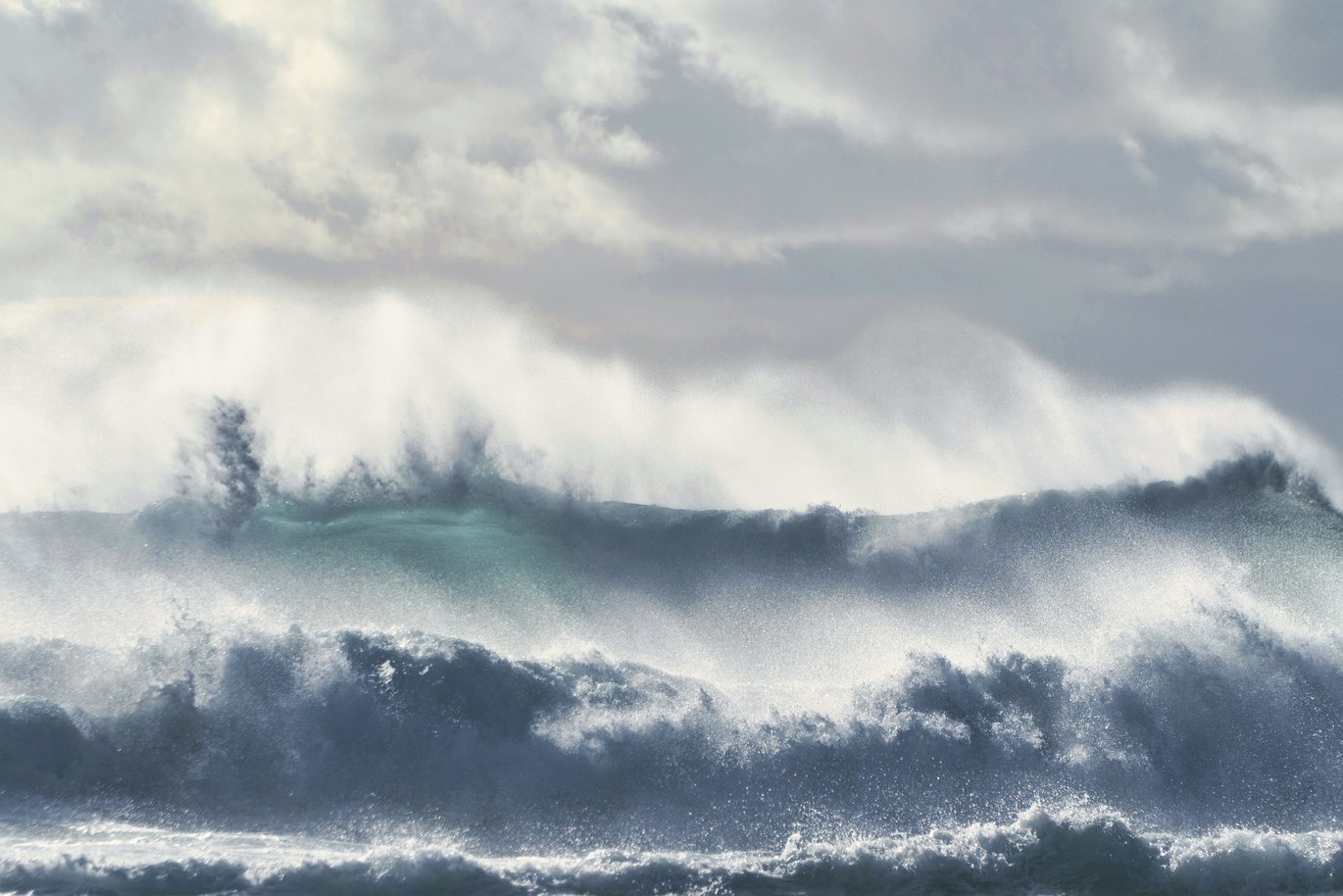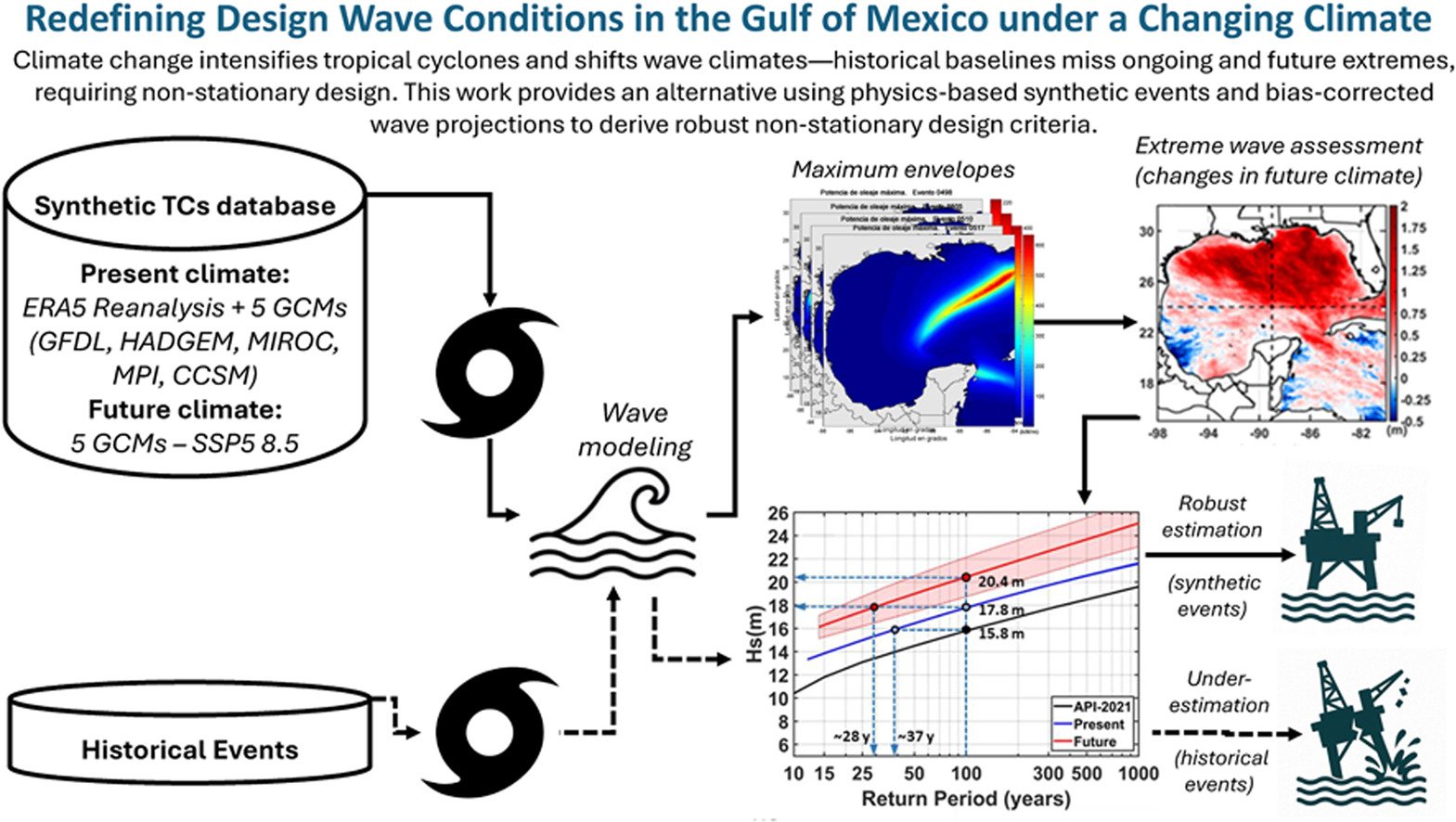Rethinking ocean wave risks in the Gulf of Mexico as the climate changes
As climate change continues to reshape our world, scientists in a new study are sounding the alarm about one of its serious consequences: bigger and more dangerous ocean waves in hurricane-prone areas like the Gulf of Mexico.


A new study by an international team of researchers headed by AIAS-AUFF Fellow Christian M. Appendini has found that extreme wave heights may already be larger than previously thought and are expected to grow even more in the future. Wave heights are used by for instance engineers and risk analysts to design offshore platforms, wind turbines and other marine infrastructure.
The findings, published in the scientific journal Ocean Engineering, suggest that relying on historical wave records and storms may no longer be enough to keep these structures safe in the decades ahead.
Why bigger waves matter
Maritime structures in the Gulf of Mexico are built to withstand what engineers call the "100-year wave," a very rare but extremely large wave expected to occur once every hundred years. But the new research shows that the 100-year wave height, when estimated using advanced modeling techniques, is about 2 meters higher than current industry standards based on historical data.
Christian M. Appendini, first-author of the study, raises his concern:
“It is of great concern that by the end of this century, these extreme waves could grow by as much as 30% in the northern Gulf of Mexico. That would significantly increase the chances that modern structures encounter waves larger than they were designed to handle.”
Developing a novel approach to estimating extreme waves
The researchers behind the study developed a new framework to better estimate these extreme waves, using about 20,000 simulated tropical cyclones. These synthetic storms were fed into a numerical wave model that captures how storm conditions create large waves across the Gulf.
Importantly, this approach does not just look at the past. Their modelling also factors in future climate projections from five leading global climate models, under a high-emissions scenario. This allows the team to forecast how wave conditions might evolve by the end of the 21st century.
Rethinking how wave risks are calculated
The study highlights the need to rethink how wave risks are calculated, moving away from the assumption that wave patterns are stable over time. Instead, engineers, planners and risk analysts should adopt “non-stationary” approaches that take into account our changing climate.
For those responsible for designing and maintaining marine infrastructure, this shift could be critical. Without updated data and design standards, there is a growing risk that offshore structures will be caught off guard by more extreme waves – and potentially putting people, investments and ecosystems at risk.
Although the study centers on a hurricane-prone area, its message is global: “As our climate and our oceans are changing, our designs need to change with them,” Appendini concludes.
Learning from hurricane-prone areas in higher-latitudes
As an oceanographer based in Mexico, currently on a research fellowship in Denmark, Christian M. Appendini points out that emerging evidence of higher-latitude increases in extreme wave height suggests that Denmark should incorporate non-stationary wave statistics when defining design criteria for offshore and coastal structures.
The full scientific paper behind the study
‘Redefining design wave conditions in the Gulf of Mexico under a changing climate’ in: Ocean Engineering by Christian M. Appendini et al, 29 May 2025:
https://www.sciencedirect.com/science/article/pii/S0029801825013915
Contact
Christian Appendini, AIAS-AUFF Fellow & Professor at UNAM, Engineering Institute, Mexico
E-mail: cma@aias.au.dk
Aarhus Institute of Advanced Studies, AIAS
Høegh-Guldbergs Gade 6B
DK-8000 Aarhus C
Denmark
